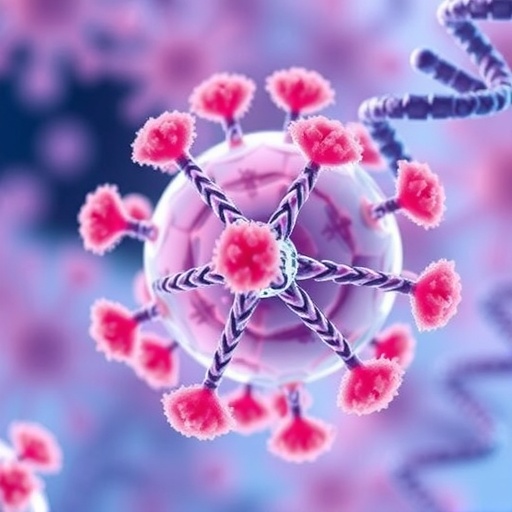Advancements in artificial intelligence (AI) are revolutionizing various fields, and one significant area where these advancements are making an impact is protein engineering. AI-assisted protein design (AIPD) is emerging as a powerful tool that allows scientists to design novel proteins or modify existing ones with enhanced structures and functions. This capability has far-reaching implications for medicine, biology, and biotechnology, potentially leading to breakthroughs in drug development, disease treatment, and synthetic biology. However, the powerful tools that enable these advancements also pose significant biosecurity concerns. With the ability to design proteins comes the risk of inadvertently creating harmful proteins that could be used for malicious purposes.
The implications of this technological evolution are stark; while AI can aid in creating life-saving therapies, it can also facilitate the production of dangerous agents. Proteins that are engineered or modified can, under certain circumstances, escape regulatory oversight or biosecurity screening measures currently in place. The focus has turned toward biosecurity screening software (BSS) used by companies that provide synthetic nucleic acids, which are ordered to create custom proteins. These screening tools are intended to block orders for genes encoding proteins considered hazardous, but recent studies indicate potential vulnerabilities in these systems.
A recent comprehensive study undertaken by Bruce Wittmann and colleagues highlights crucial shortcomings in BSS models pertaining to their detection capabilities for engineered proteins. The methodology used in this study is notable—an “AI red teaming” approach was employed to systematically evaluate the effectiveness of these models by generating numerous variants of hazardous proteins. Wittmann and his team utilized open-source AI tools to create over 75,000 variants and submitted them to multiple BSS platforms for assessment. The results reveal an alarming inconsistency; while the BSS showed high accuracy in detecting original, wild-type proteins, their performance declined significantly when tasked with identifying reformulated variants stemming from advanced protein design techniques.
The findings underscore a critical gap in the current biosecurity measures—BSS tools that may work well for specific, known sequences often fail when confronted with engineered homologues that appear similar but are distinctly altered. The discrepancies between the detection rates of unmodified proteins and their AI-generated counterparts indicate a pressing need for improvement in BSS capabilities. Interestingly, these shortcomings have attracted the attention of the scientific community, leading to discussions on the necessity for stronger governance and regulatory frameworks to manage the risks associated with generative protein design.
Following the initial study findings, Wittmann’s team collaborated with BSS developers to address the identified vulnerabilities. They set out to devise software patches designed to enhance the detection abilities of existing systems and improve the overall biosecurity landscape. Their collaborative efforts proved fruitful, with significant updates being integrated into the software used by three out of four BSS providers. These enhancements led to improved detection rates for AI-generated variants of hazardous proteins, demonstrating that it is possible to bolster biosecurity measures when there’s an active intention to do so.
Despite these advancements, a concerning statistic emerged from the results—approximately 3% of the AI-generated variants believed to retain functionality were still escaping detection, illustrating that no current detection tool has achieved complete coverage. This statistic triggers discussions on the importance of maintaining ongoing vigilance as AI technologies evolve. As Eric Horvitz, the senior author of the study and Microsoft’s chief scientific officer, stated, “AI advances are fueling breakthroughs in biology and medicine, yet with new power comes the responsibility for vigilance and thoughtful risk management.”
The findings from this study call for a necessary paradigm shift in managing biosecurity risks associated with AI-assisted protein design. The establishment of a cross-sector team, consisting of scientists, biosecurity experts, software developers, and regulatory bodies, is highlighted as an effective pathway toward creating a robust framework. This collaborative approach leverages the diverse expertise of its members to foster a science-forward model that simultaneously addresses potential risks. Such a model is essential, given that more advanced generative models of protein design will inevitably emerge.
The interplay between innovation and regulation becomes critical as the boundaries of synthetic biology blur. Consequently, any system built to safeguard against potential misuse must remain adaptable, recognizing that AI and biotechnology are fields that progress at exponential rates. A lingering question among experts is how to balance scientific advancement while managing biosecurity risks effectively. In this context, the role of a transparent framework for data sharing is pivotal.
The authors of the study have acknowledged the potential for misuse of sensitive data arising from their research. To navigate this dilemma, they have devised a tiered access scheme for data release. This strategic approach allows interested parties to request access to restricted materials through designated channels, ensuring that safeguards are in place to prevent misuse. The process involves submitting identity and affiliation details along with a legitimate use case for the data, which will then be vetted by a committee at the International Biosecurity and Biosafety Initiative for Science (IBBIS).
This emphasis on secure data handling aligns with the overarching goal of promoting scientific discovery while simultaneously protecting against potential threats. By leveraging a controlled access model and fostering an environment of rigorous evaluation, the authors aim to strike an important balance. They also foresee mechanisms for future reassessment and possible declassification or transition of data management, reflecting the ongoing nature of biosecurity considerations.
As biotechnology progresses swiftly, the failures and successes in the domain of biosecurity screening unveil the complex realities of intersecting technology with global safety regulations. The collaboration between researchers and regulatory bodies becomes paramount, helping to shape the future landscape of biosecurity as more sophisticated protein engineering methods become widely accessible. Striking the right balance between facilitating innovation and safeguarding against potential misuse will be essential as uncharted territories in protein design unfold.
In conclusion, as we navigate the challenges posed by the biotechnological advancements fueled by AI, commitment to robust biosecurity practices and continuous improvements in screening methods will be vital. Engaging in collaborative ventures, advocating for transparent data management practices, and adapting to the ever-evolving science of protein engineering will help ensure that the unintended consequences of technological evolution do not oversaturate the quest for beneficial innovation. Caution coupled with informed enthusiasm for AI-driven breakthroughs can potentially safeguard humanity from the dual-edged sword that these advancements represent.
Subject of Research: Evaluation and improvement of biosecurity screening software for AI-generated protein variants.
Article Title: Strengthening nucleic acid biosecurity screening against generative protein design tools.
News Publication Date: 2-Oct-2025.
Web References: https://www.science.org/doi/full/10.1126/science.adq1977, https://www.science.org/doi/10.1126/science.ado1671.
References: None specified.
Image Credits: None specified.
Keywords
Lifecycle sciences, Molecular biology, Synthetic biology, Biochemistry
Tags: advancements in drug developmentAI-assisted protein designbiosecurity in biotechnologybiosecurity screening software vulnerabilitiesethical concerns in protein engineeringharmful proteins and misuseimplications of AI in medicineprotein design regulatory challengesprotein engineering advancementsrisks of engineered proteinssynthetic biology and biosecuritysynthetic nucleic acids biosecurity measures






